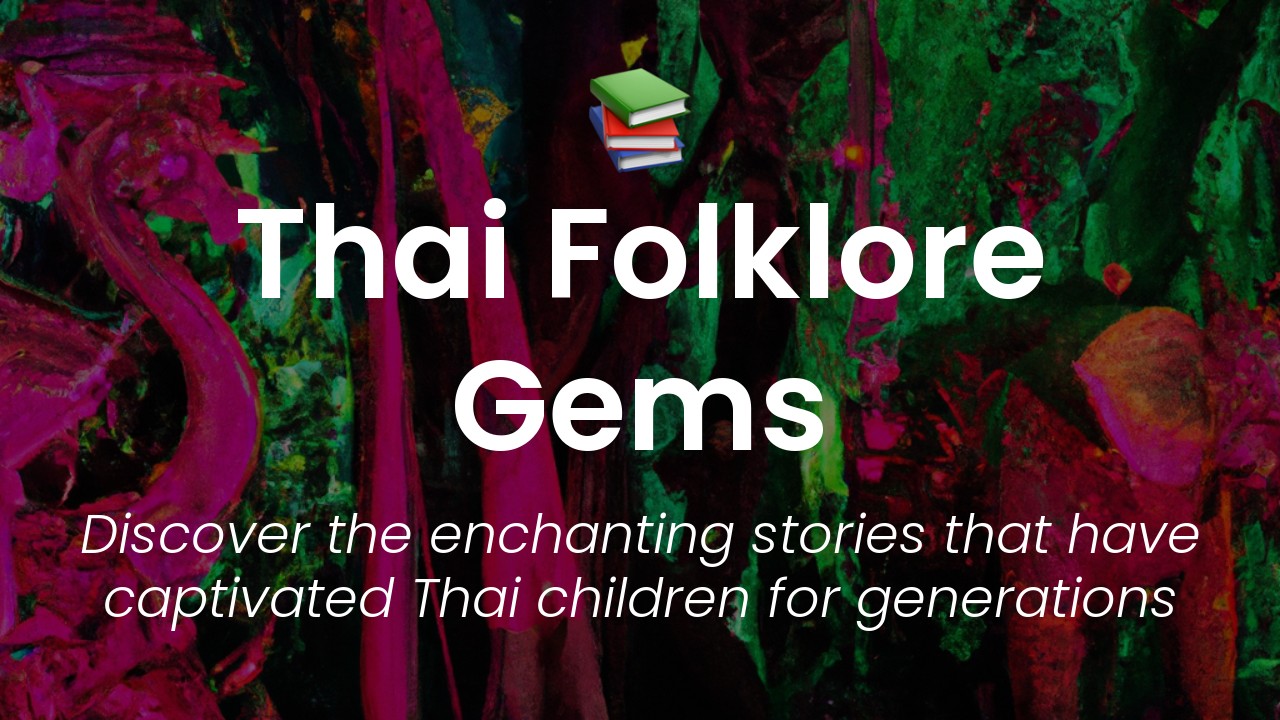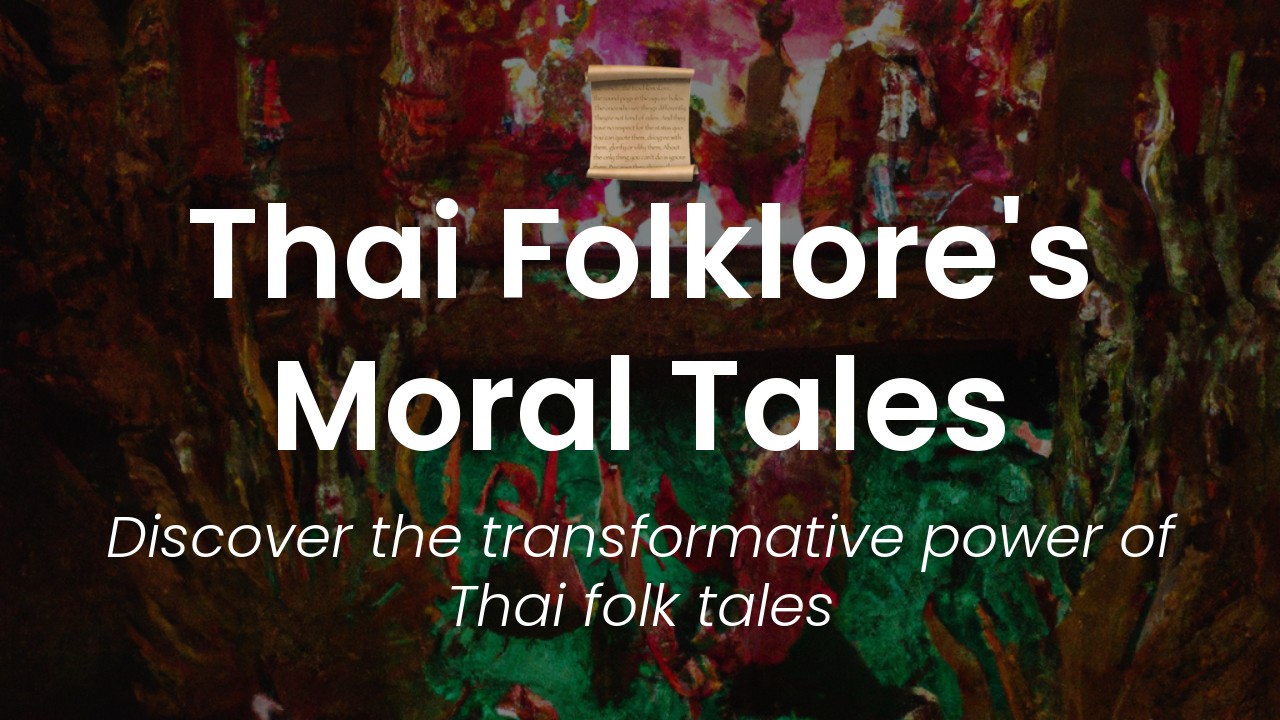As someone who has grown up in Thailand, I have always been surrounded by temples. They serve as a reminder of the rich culture and history that my country holds. But, these temples are more than just beautiful structures. They are also home to a multitude of legends and mysteries that have been passed down through generations.
There is a certain aura of mystique surrounding Thai temples, which is why they are a popular tourist attraction. But, many visitors are unaware of the fascinating stories that these grand structures hold. As such, I decided to write about some of the most intriguing legends and mysteries of Thai temples in this article.
Join me as we delve into the past and uncover the secrets of some of Thailand's most iconic temples. From the infamous Emerald Buddha to the stunning Wat Rong Khun, I will share the stories that have been passed down for centuries. Prepare to be enchanted by the tales of mythical creatures, historical figures and divine forces that have shaped Thailand's cultural identity.
So, get ready to be transported on an unforgettable journey as we unravel the mysteries of Thai temples. Let's explore the legends and delve into the history that has made these temples so revered, not just in Thailand, but around the world.
Wat Arun, Temple of Dawn
Wat Arun, which is also known as the Temple of Dawn, is one of Thailand's most famous temples located in the capital city of Bangkok. This temple was built during the Ayutthaya era and was known as Wat Makok. The temple was later restored and renamed by King Rama II to Wat Chaeng, but the name Wat Arun was given to it by King Rama IV in the 19th century.
One of the most interesting legends surrounding Wat Arun is its origin story. According to local folklore, the king of China at the time had a dream in which he saw a magnificent temple that was bathed in the first light of dawn. He believed that this temple must be built no matter the cost and searched for a place to build it. Eventually, he found a spot on the west bank of the Chao Phraya River, where the current Wat Arun is located and ordered its construction.
Another fascinating aspect of the temple is its Khmer-style prang (tower) which is covered in colorful pieces of Chinese porcelain and seashells. According to the legend, the architect who designed the tower was a Chinese immigrant who was ashamed that he was unable to contribute any money to the temple. Instead, he came up with the idea of using the broken crockery that he found along the banks of the river to decorate the tower. His idea was soon adopted by others and the resulting mosaic of colorful pieces of porcelain is still visible today.
Wat Phra Kaew, Temple of the Emerald Buddha
Located within the grounds of the Grand Palace in Bangkok, Wat Phra Kaew is one of the most important temples in Thailand. It is known as the Temple of the Emerald Buddha because it houses a small green statue made of jade that is believed to bring good luck to the country.
The legend of the Emerald Buddha is an interesting one. According to the story, the statue was discovered in Chiang Rai province in the north of Thailand in the 15th century. Initially, it was believed to be made of ordinary glass and was kept in a temple in Chiang Rai. However, during a thunderstorm, the temple's roof was damaged and a monk noticed that the statue was glowing from within and appeared to be made of more valuable materials.
The statue was then moved to different temples across Thailand until it finally found its current home at Wat Phra Kaew in the 18th century. It is believed that the statue brings good luck to the country and the Thai monarchs have a tradition of changing the statue's attire to coincide with the arrival of each season.
Wat Phra That Doi Suthep, Temple on the Mountain
Wat Phra That Doi Suthep is a temple located on top of Doi Suthep mountain in the northern Thai city of Chiang Mai. According to legend, the temple was built in the 14th century by King Kuena, who wanted to enshrine a holy relic he had obtained from a monk.
The legend goes that King Kuena placed the holy relic on the back of a white elephant and released it into the forests of northern Thailand. The elephant climbed up to the top of Doi Suthep mountain and died. The king saw this as a sign that this was the spot where the temple should be built and ordered its construction.
Visitors to Wat Phra That Doi Suthep must climb a steep staircase of 309 steps to reach the temple. However, the climb is worth it as the temple offers stunning views of Chiang Mai and the surrounding countryside.
Wat Mahathat, Temple of the Great Relics
Wat Mahathat is located in the ancient city of Ayutthaya, which was the capital of Thailand from the 14th to the 18th century. The temple is best known for its iconic Buddha head that is entwined in the roots of a banyan tree.
According to legend, the temple was built in the 14th century to house a relic of the Buddha's tooth. The relic was brought to Ayutthaya by a monk and became one of the most important relics in Thailand.
The Buddha head that is entwined in the tree's roots is believed to have been created sometime in the 16th century. It is unclear how the head ended up in its current location, but it is thought that it may have been hidden during an invasion and then forgotten over time.
Visitors to Wat Mahathat can explore the temple's ruins and see the iconic Buddha head for themselves. The temple is a popular attraction in Ayutthaya and attracts tourists from all over the world.
Wat Rong Khun, The White Temple
The White Temple, or Wat Rong Khun, is a relatively new temple located in Chiang Rai province in northern Thailand. It was designed and built by local artist Chalermchai Kositpipat, who wanted to create a temple that was a tribute to Thai culture and Buddhism.
The temple's most striking feature is its white exterior, which is decorated with silver and mirrored tiles. The interior is equally as impressive, with murals that depict images from pop culture, such as the Predator and Michael Jackson.
There are also many Buddhist symbols throughout the temple, including a bridge that represents the journey from the cycle of rebirth to the state of enlightenment. The bridge is lined with hands that represent earthly desires and the demon's mouth that depicts suffering.
Wat Phra Si Sanphet, Temple of the Holy, Splendid Omniscient
Wat Phra Si Sanphet is one of the most important temples in Ayutthaya and was once the home of the Thai royal family. The temple was built in the 15th century and was further expanded during the reign of King Borommatrailokanat. It was used as a royal palace until it was destroyed by the Burmese army in the 18th century.
The temple is best known for its three chedis (stupas) which are covered in gold leaf. The chedis were built to house the ashes of three of Ayutthaya's kings and are an important symbol of the city's cultural heritage.
Visitors to Wat Phra Si Sanphet can explore the temple's ruins and see the chedis up close. The temple is a popular destination for tourists and is a must-visit for anyone interested in Thai history.
Wat Chai Watthanaram, Temple of Long Reign and Glorious Era
Wat Chai Watthanaram is another important temple located in Ayutthaya. It was built in 1630 by King Prasat Thong to mark the end of long-standing conflict with Cambodia. The temple is designed in the Khmer style and was built to resemble a miniature version of Angkor Wat.
The temple's most important feature is its central prang (tower) which is surrounded by smaller prangs and chedis. The central prang was designed to represent Mount Meru, the center of the universe in Hindu and Buddhist cosmology.
Visitors to Wat Chai Watthanaram can explore the temple's ruins and learn more about the temple's history. The temple is a popular destination for tourists and is considered to be one of Ayutthaya's most iconic landmarks.
Conclusion
Thailand is home to many beautiful and historic temples, each with its own story and legends. From the iconic Emerald Buddha at Wat Phra Kaew to the colorful mosaic-covered tower at Wat Arun, each temple offers visitors a glimpse into the country's rich cultural heritage. Whether you are drawn to the tranquil beauty of the northern mountains or the hustle and bustle of the capital city, Thailand's temples are a must-visit for anyone interested in history, culture, and spirituality.







